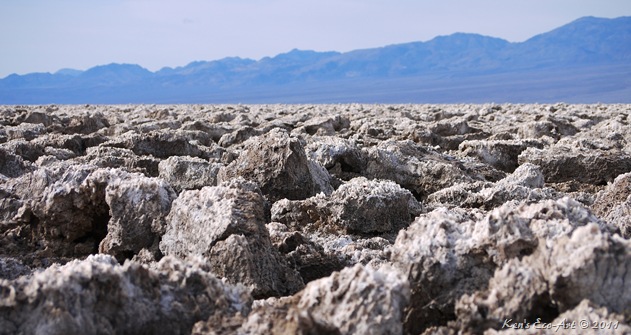Thursday
Sunday
The Devil's Golf Course - Death Valley National Park
{Click on an image to enlarge, then use the back button to return to this page}
This page last updated on 02/09/2018
Subscribe to:
Posts (Atom)
 |
| On 04/11/2010 I drive out to an area on the valley’s floor called the Devil’s Golf Course. The surface n this area surely provides one of the most fascinating natural textures in existence. It was so named after a line in the 1934 National Park Service guide book to Death Valley National Monument, which stated that " Only the devil could play golf " on its surface, due to a rough texture from the large Halite salt crystal formations. |
| Background: Lake Manly once covered the valley to a depth of more than 30 feet. The Halite salt crystals consists of the minerals that were dissolved in the lake's water and left behind in the Badwater Basin as the lake evaporated. With an elevation several feet above the valley floor at Badwater, this area remains dry, allowing weathering processes to sculpt the salt there into complicated forms. Through exploratory holes drilled by the Pacific Coast Borax Company, prior to Death Valley becoming a national monument in 1934, it was discovered that the salt and gravel beds of the valley floor in this location extend to a depth of more than 1,000 feet; later studies suggest that in places the depth ranges up to 9,000 feet. |